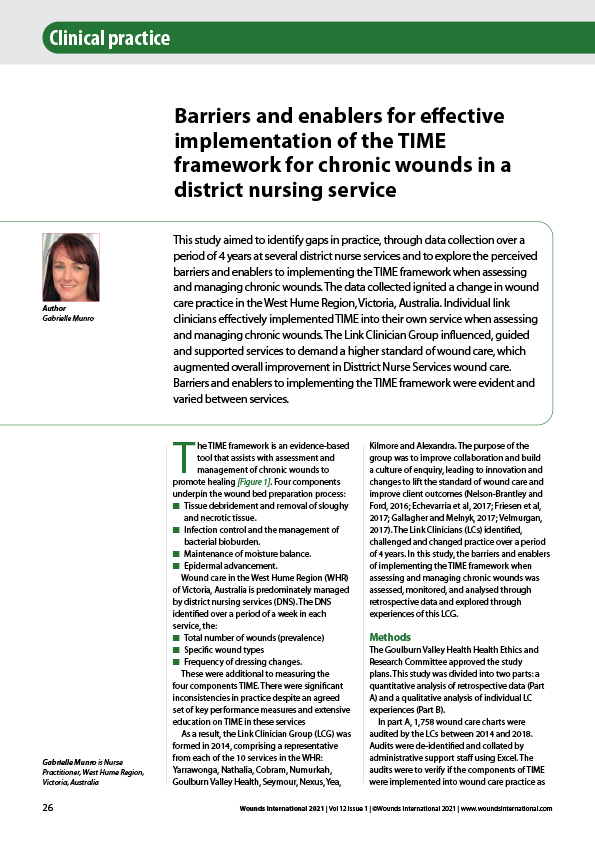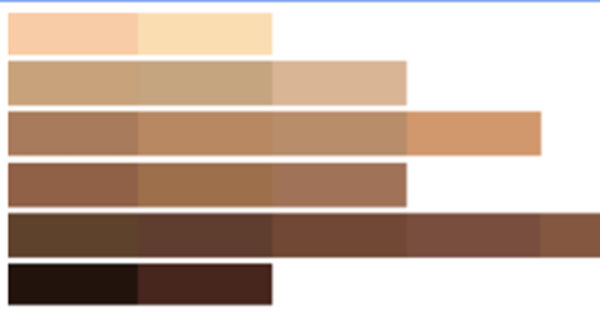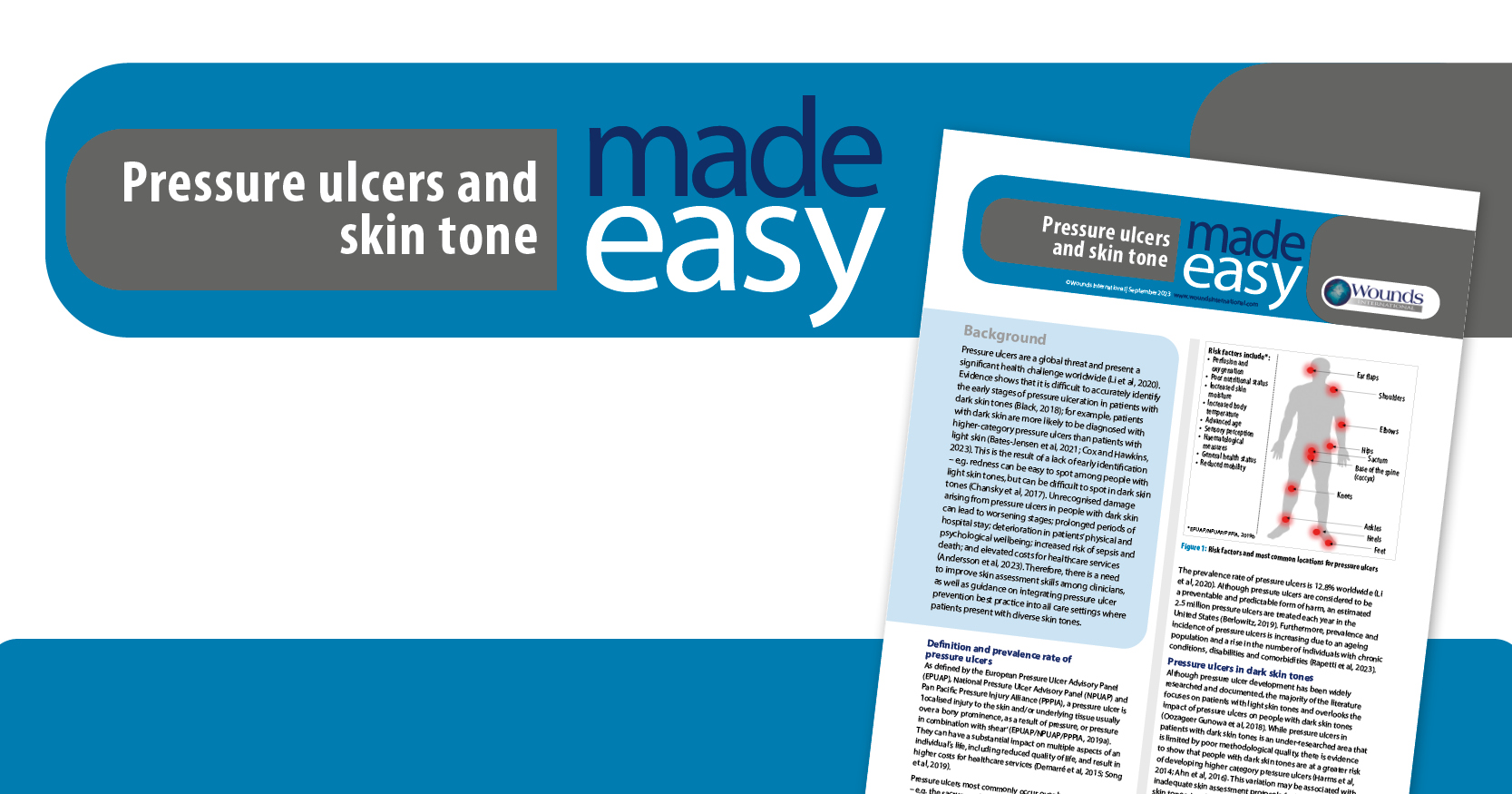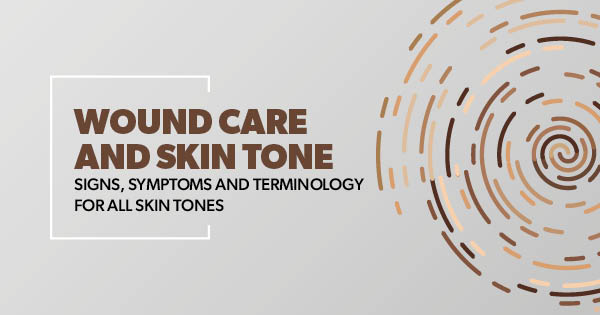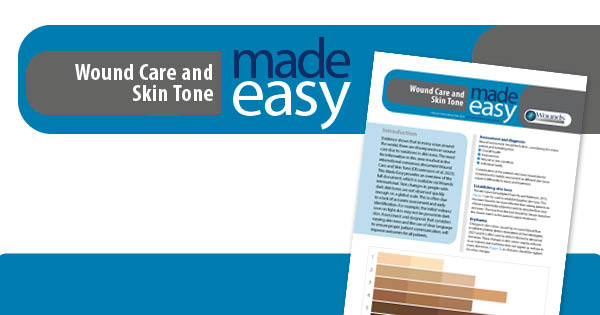This study aimed to identify gaps in practice, through data collection over a period of 4 years at several district nurse services and to explore the perceived barriers and enablers to implementing the TIME framework when assessing and managing chronic wounds. The data collected ignited a change in wound care practice in the West Hume Region, Victoria, Australia. Individual link clinicians effectively implemented TIME into their own service when assessing and managing chronic wounds. The Link Clinician Group influenced, guided and supported services to demand a higher standard of wound care, which augmented overall improvement in Disttrict Nurse Services wound care. Barriers and enablers to implementing the TIME framework were evident and varied between services.

